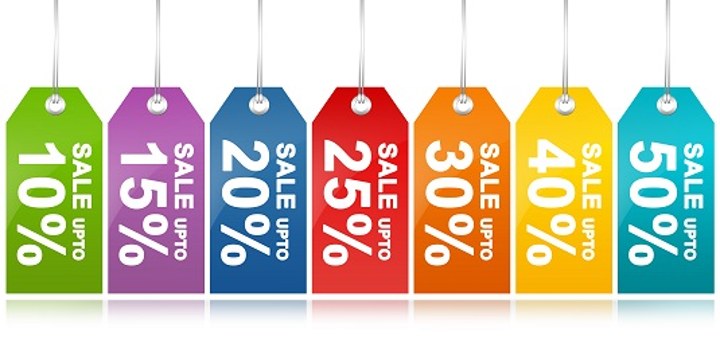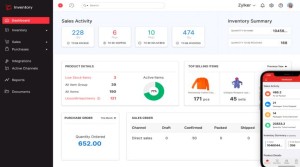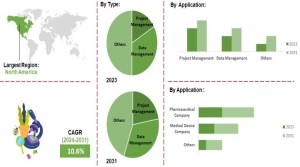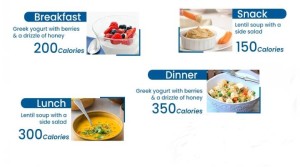Importance of Percentages In Various Fields of Life
Unleash the power of percentages! Examine their significance in finance, education, and health, among other areas. Learn how they impact our world.

Understanding percentages is a vital ability in everyday life and is required in many disciplines, including banking, mathematics, and statistics. Mastering percentage calculations is essential for calculating discounts during a shopping spree, determining tax rates, assessing data patterns, and understanding statistical information. This basic guide seeks to demystify the concept of percentages, giving you a thorough understanding of how they function and how to conduct calculations effectively. We will look at the fundamentals of percentages, including their definition, notation, and popular uses.
In addition, we'll look at some ways to calculate percentages, ranging from simple math strategies to more complex formulas. You will have an idea and ability to confidently handle any percentage related challenge that comes your way. So, let us dive in and discover the magic of percentages.
Calculating percentages involves straightforward formulas and practical applications. The basic formula to calculate a percentage is given below.
Percentage = Part / Whole x 100%
Importance of Percentages In Various Fields
Percentages are proportions or fractions of a whole, usually expressed in parts per hundred. They are important in many disciplines, including finance, business, mathematics, and statistics. In finance, percentages are used to determine interest rates, investment returns, and profit margins. Businesses use percentages to monitor sales patterns, determine pricing strategies, and evaluate performance measures. In mathematics, percentages are used to solve equations, evaluate ratios, and interpret data.
In statistics, percentages are used to describe data distributions, compute probabilities, and draw conclusions based on sample surveys. Overall, percentages are a universal tool for quantifying relationships, comparing values, and comprehending relative changes, making them important in a wide range of practical applications.
Percentage Calculations and Their Application In Everyday Life
Percentage calculations entail calculating a percentage of a total expressed as a fraction of 100. This fundamental notion has widespread application in everyday life, influencing decisions ranging from budgeting to nutritional analysis. In personal finance, percentages are used to compute discounts, taxes, and savings growth. When buying, understanding percentages helps you compare prices and evaluate discounts. In health and nutrition, percentages are used to analyze product labels, track nutritional intake, and establish exercise objectives.
Percentages are very important in academic and professional settings, as they guide data analysis, performance reviews, and goal planning. As a result, mastering percentage calculations allows people to make more informed decisions, manage resources more effectively, and confidently navigate a wide range of real world settings.
Different Types of Percentage Calculations
Percentage calculations are widely used in many industries, providing insights into changes, proportions, and comparisons. The three most popular categories are as follows.
1. Percentage Increase or Decrease
This calculates the change in value as compared to the original. For example, to calculate a 20% increase of 100, multiply 100 by 1.20 to get 120. To find a 20% drop, multiply 100 by 0.80, yielding 80.
2. Percentage of a Number
This defines how much of a number another number represents. For example, to find 20% of 150, multiply 150 by 0.20 to obtain 30.
3. Percentage Change
This metric measures the relative change between two values. It's computed as the difference between the new and old values, divided by the old value, then multiplied by 100 to get a percentage. For example, if a stock price rises from $50 to $60, the percentage change is ((60 - 50)/50) x 100 = 20%. If it falls from $60 to $50, the percentage change is ((50 - 60)/60) x 100 = - 16.67%.
These computations are essential in banking, economics, statistics, and everyday life, helping with decision making, analysis, and trend comprehension.
Convenience of Using Online Percentage Calculators
Online percentage calculators and smartphone apps provide unrivaled convenience for rapid computations, simplifying difficult math. For starters, they save time by providing precise results immediately, eliminating the need for users to manually crunch figures. These apps make it easy to calculate discounts while shopping or figure out tip percentages at a restaurant.
Furthermore, online percentage calculators and mobile apps are versatile across multiple devices, including smartphones, tablets, and laptops. This accessibility means that users can execute computations at any time and from any location, eliminating the need for cumbersome paper and pen.
These programs frequently provide extra features like historical logs and adjustable settings, allowing users to track their calculations and tailor the experience to their tastes. This not only improves ease, but it also encourages order and efficiency while managing numerical duties.
Many of these calculators and applications have simple interfaces that make math easier for people of all skill levels. Whether you're a student doing homework or a professional managing business finances, the user friendliness of these tools provides smooth computations without the stress of manual computation.
In essence, the ease of online percentage calculators and mobile applications stems from their capacity to perform calculations quickly and precisely while also providing flexibility, accessibility, additional features, and user friendly interfaces, making them useful companions for daily arithmetic chores.

Understanding percentages is a vital ability in everyday life and is required in many disciplines, including banking, mathematics, and statistics. Mastering percentage calculations is essential for calculating discounts during a shopping spree, determining tax rates, assessing data patterns, and understanding statistical information. This basic guide seeks to demystify the concept of percentages, giving you a thorough understanding of how they function and how to conduct calculations effectively. We will look at the fundamentals of percentages, including their definition, notation, and popular uses.
In addition, we'll look at some ways to calculate percentages, ranging from simple math strategies to more complex formulas. You will have an idea and ability to confidently handle any percentage related challenge that comes your way. So, let us dive in and discover the magic of percentages.
Calculating percentages involves straightforward formulas and practical applications. The basic formula to calculate a percentage is given below.
Percentage = Part / Whole x 100%
Importance of Percentages In Various Fields
Percentages are proportions or fractions of a whole, usually expressed in parts per hundred. They are important in many disciplines, including finance, business, mathematics, and statistics. In finance, percentages are used to determine interest rates, investment returns, and profit margins. Businesses use percentages to monitor sales patterns, determine pricing strategies, and evaluate performance measures. In mathematics, percentages are used to solve equations, evaluate ratios, and interpret data.
In statistics, percentages are used to describe data distributions, compute probabilities, and draw conclusions based on sample surveys. Overall, percentages are a universal tool for quantifying relationships, comparing values, and comprehending relative changes, making them important in a wide range of practical applications.
Percentage Calculations and Their Application In Everyday Life
Percentage calculations entail calculating a percentage of a total expressed as a fraction of 100. This fundamental notion has widespread application in everyday life, influencing decisions ranging from budgeting to nutritional analysis. In personal finance, percentages are used to compute discounts, taxes, and savings growth. When buying, understanding percentages helps you compare prices and evaluate discounts. In health and nutrition, percentages are used to analyze product labels, track nutritional intake, and establish exercise objectives.
Percentages are very important in academic and professional settings, as they guide data analysis, performance reviews, and goal planning. As a result, mastering percentage calculations allows people to make more informed decisions, manage resources more effectively, and confidently navigate a wide range of real world settings.
Different Types of Percentage Calculations
Percentage calculations are widely used in many industries, providing insights into changes, proportions, and comparisons. The three most popular categories are as follows.
1. Percentage Increase or Decrease
This calculates the change in value as compared to the original. For example, to calculate a 20% increase of 100, multiply 100 by 1.20 to get 120. To find a 20% drop, multiply 100 by 0.80, yielding 80.
2. Percentage of a Number
This defines how much of a number another number represents. For example, to find 20% of 150, multiply 150 by 0.20 to obtain 30.
3. Percentage Change
This metric measures the relative change between two values. It's computed as the difference between the new and old values, divided by the old value, then multiplied by 100 to get a percentage. For example, if a stock price rises from $50 to $60, the percentage change is ((60 - 50)/50) x 100 = 20%. If it falls from $60 to $50, the percentage change is ((50 - 60)/60) x 100 = - 16.67%.
These computations are essential in banking, economics, statistics, and everyday life, helping with decision making, analysis, and trend comprehension.
Convenience of Using Online Percentage Calculators
Online percentage calculators and smartphone apps provide unrivaled convenience for rapid computations, simplifying difficult math. For starters, they save time by providing precise results immediately, eliminating the need for users to manually crunch figures. These apps make it easy to calculate discounts while shopping or figure out tip percentages at a restaurant.
Furthermore, online percentage calculators and mobile apps are versatile across multiple devices, including smartphones, tablets, and laptops. This accessibility means that users can execute computations at any time and from any location, eliminating the need for cumbersome paper and pen.
These programs frequently provide extra features like historical logs and adjustable settings, allowing users to track their calculations and tailor the experience to their tastes. This not only improves ease, but it also encourages order and efficiency while managing numerical duties.
Many of these calculators and applications have simple interfaces that make math easier for people of all skill levels. Whether you're a student doing homework or a professional managing business finances, the user friendliness of these tools provides smooth computations without the stress of manual computation.
In essence, the ease of online percentage calculators and mobile applications stems from their capacity to perform calculations quickly and precisely while also providing flexibility, accessibility, additional features, and user friendly interfaces, making them useful companions for daily arithmetic chores.
Conversation
Latest Blogs
© Blog CoolCalculator, Explore CoolCalculator, your destination for the latest insights, tips, and updates on the world of online calculators. Stay informed and make your calculations smarter with our blog. ,
Designed
by Saad Media Team , Team Lead M.Rizwan Akhtar












